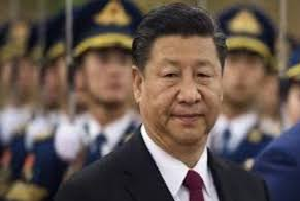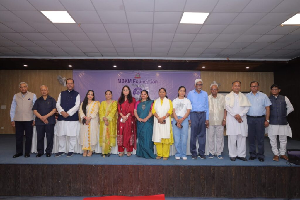5

Need To Improve Mode of On-Line Education
Dr Anubhav Mathur
New Delhi | Thursday | 5 September 2024
With 25 crore students in schools and nearly 3.7 crore students in colleges and professional institutes, India has one of the world’s biggest education setups. However, hardly 30 per cent of these students in urban and rural India have internet facilities and digital devices like computers and mobile phones to use this facility. During the Corona pandemic years the lockdown and the fear of coronavirus led to the closing of educational institutions and a situation was created when there was of no teaching for 70 per cent of our students. Such a situation is singularly unfortunate in a developing country where education is basic to fighting backwardness and improving the living standards of the masses.
The Corona crisis also brought to light the fact that even the smaller percentage of students with internet facilities could not be given proper education. The reason was not only problems like erratic power supply and poor internet connectivity. The inadequate knowledge and poor skills of teachers in the use of digital devices for online education were major constraints. This has been unfortunate because imparting training in the use of digital devices for teachers and students was the least problematic of the many grim challenges before us. The immediate need to improve techniques and skills in online teaching methodology, therefore, is a matter of top priority crisis or no crisis. In a country where infrastructure facilities in rural and semi-urban leave a lot to be desired the need of good on-line education cannot be overemphasised.
However, only 30% of these students have access to the internet and digital devices, leaving 70% without education during the lockdown. The pandemic has also highlighted the need for teachers to be trained in digital media skills to provide effective online education. Digital media has the potential to transform the education sector, making it more accessible and engaging.
To achieve this, a three-point program is suggested: planning flexible digital media programs, developing a formal digital media curriculum, and establishing open data systems. By adopting digital media, India can convert the adversity of the pandemic into an opportunity to spread education and improve the living standards of its people.
Before we talk of a strategy to train teachers in digital media skills and prepare them for imparting effective online education, let us try to understand what exactly is involved in teaching by sitting before a computer instead of standing in a classroom. In layman’s terms, digital media refers to any kind of information broadcast to us through a screen. This information might be found on websites or in applications, software packages, video games, and more. This makes digital media a very broad term.
Those in the field of education should take to digital media use to facilitate more effective teaching and learning methods which includes interactions and communication with students.
Digital media is a transformative technology that is dramatically changing the face of the academic world in developed countries. In the Corona Times, we have been trying to adapt to major changes in how we interact with and communicate with students. In a way, it is an exciting time to be in education. Harnessing the power of digital media has the potential to re-engage students and their parents. This calls for a minimum level of digital media fluency in using appropriate digital platforms.
But digital media fluency necessitates that all those involved with training and education develop at least a working knowledge of the myriad technologies including digital media and cloud computing platforms. Determining what are basic applications and their potential pitfalls remains rather difficult. Yet this is a critically important task for all. Ultimately, this will enable us to develop effective standards and protocols for digital media use in all spheres of education.
What we need is a teaching community well versed in the use of digital technologies and willing to upgrade its skills to communicate with students and motivate them to use the potential of digital media tools for enhanced learning.
Digital media use by teachers seeking interaction with their students needs to be more focused. The desire for communication and the ability to complete tasks online has to be fairly strong.
Innovation is fundamental to any social activity and embracing change must continue with our approach to digital media. We can tweet safety alerts, track trends on policy initiatives on Twitter and use smartphone apps to report potholes in our education system or address ethical questions. Our limitations are only bound by our imaginations and our willingness to embrace change.
Digital media eliminates barriers of time and distance. In education, it can improve knowledge delivery through increased access and processing speed. Data can be readily shared and transformed into usable information via accessible central repositories. Access to data across classrooms can facilitate small, but useful change.
The blueprint for digital media use in the field of education is still evolving and there is no one-size-fits-all model. Therefore, it is important to chart our path as we reach to improve our teaching and learning skills. Accessibility to knowledge is translating into new ways of delivering in lecture rooms. So, all of those in the field of education must effectively adapt to this new paradigm and improve their core competence.
The following three-point program can serve as a starting point for developing the skills of the teaching community that will meet the challenge posed in imparting online education.
Planning a series of flexible and broad-based digital media programs, both in terms of faculty resources and IT skill enhancement that can grow, as needs evolve.
Developing a formal digital media curriculum to serve as basic to ensure universal application and common usage in the field of education.
Establishing networks of open data systems to facilitate broader faculty engagement in problem-solving in the education sector.
Online education was there even before Corona forced lockdown and made homestay necessary. However, Corona created a need for its widespread and universal application. With the country all set for a massive vaccination program, we will win the war against Corona soon. However, online teaching, which became a necessity to meet the adversity, can be converted into an opportunity to spread the net of education.



















































































































































































































































































































































































































































































































































































































































































































































































































































































































































































































































































































































































































































































































































































































































































































































































































































































